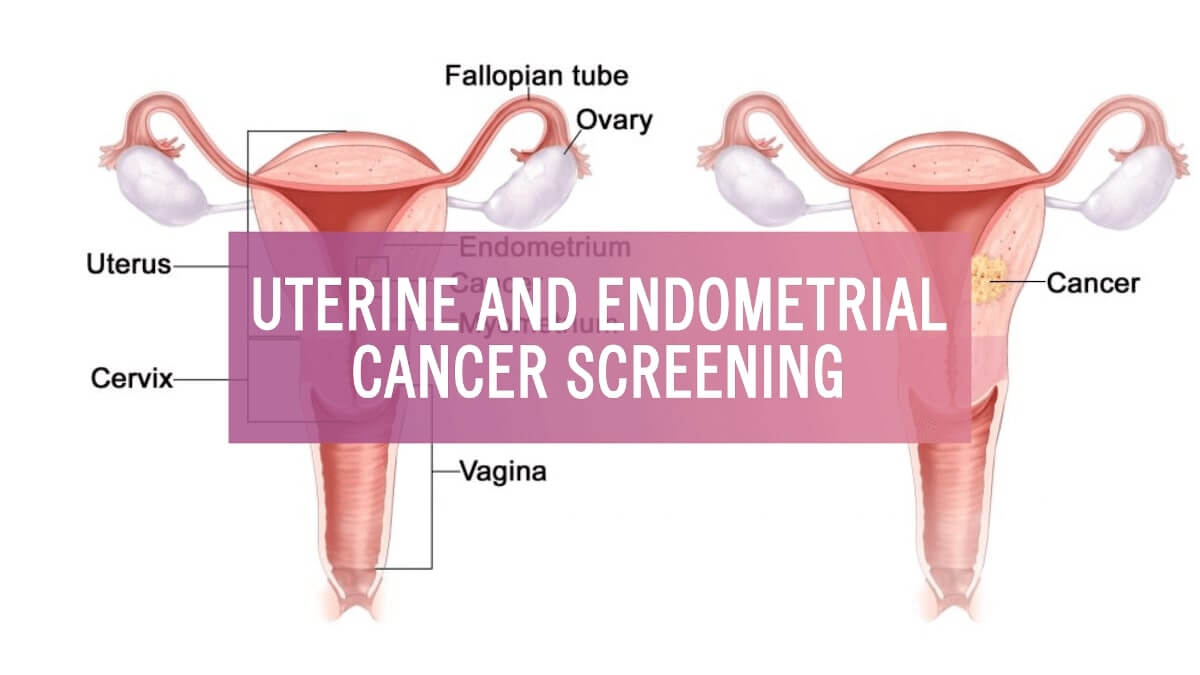Women who are at high risk of ovarian and fallopian tube cancer are advised to screen for it.
Ovarian and Fallopian tube cancer screening test
Cancer is of many types and can be found in any part of the human body. However, women more commonly suffer from ovarian and fallopian tube cancer.
Women who have first/second-degree relatives (mother/sister/daughter) diagnosed with ovarian cancer or breast cancer are at an increased risk. Also, women with a family history of cancer or personal history of cancer of the breast, uterus, colon, or rectum may also have an increased risk of ovarian cancer. Infertile women, women who have never breastfed also show an increased risk of ovarian cancer.
Ovarian and fallopian tube cancer can be screened and diagnosed even before the woman starts to experience any symptoms. A study stated that approximately 70% of ovarian and fallopian tube cancer doesn’t get detected until it reaches the last stage. Therefore, for women with an increased risk, screening assists in finding the disease at an early stage.

Though symptoms of ovarian and fallopian tube cancer do not appear at an early stage, one should keep a check on any of the below-mentioned symptoms, if they appear.
Symptoms of Fallopian Tube Cancer
– There may be fluid discharge from the vagina in white, pink or transparent color
– You may experience pain and pressure in the lower belly
– You may experience swelling in the lower belly
– You may experience vaginal bleeding on non-period days
Symptoms of Ovarian Cancer
– There may be a palpable mass in the abdominal area
– You may feel heaviness in the abdomen
– You may experience indigestion, constipation, nausea or vomiting
Various tests are available to detect cancer in the reproductive organs of a female. However, doctors consider some of the following critical factors while choosing a specific screening test.
Factors such as:
- Patient’s age and general health
- The symptoms and signs being noticed
- Type of cancer detected
- Outcomes of previous medical tests
It is always wise to run the recommended test/s suggested by the doctor so that timely diagnosis and proper treatment of ovarian and fallopian tube cancer is ensured. Sometimes, these screening tests are not sufficient to successfully diagnose the condition. This happens because women usually don’t experience any symptoms or problems until the tumor becomes large and reaches the last stage.
Some of the primary tests conducted to detect ovarian and fallopian tube cancer are:
- Transvaginal Ultrasound (TVUS)
This test includes an ultrasound probe that is inserted through the vagina into the ovaries and uterus. High-frequency sound waves are used in this test to develop an image of the internal organs. It generates pictures of ovaries along with the nearby tissues and helps detect any tumors if present.
- CA-125 blood test
A substance known as CA-125 is a tumor marker that is released into the bloodstream. This substance then can be detected in higher amounts in females with ovarian and fallopian tube cancer. Also, in women with conditions like endometriosis, inflammation, and uterine fibroids, CA-125 is detected in high amounts. However, the CA-125 blood test has proved to be highly accurate in detecting cancer of the ovary and fallopian tube in women.
- Rectovaginal pelvic exam
It is a kind of gynecological test and internal vaginal exam that is used to detect cancer in the pelvic region. The doctor will insert a finger in the vagina and rectum to get through to the rectovaginal septum and access for any lumps in this test. It helps the doctor to access any unusual lumps that indicate cancer. It may sound uncomfortable, but the rectovaginal exam is not painful and provides full access to the examiner to observe the size, shape, and position of the tumor if any present. An abnormal presence of mass will directly indicate the presence of cancer.
Conclusion
Majority cases of ovarian cancer require surgery or chemotherapy. The main aim of surgery is to remove the cancerous area and eliminate the spread of the disease altogether. However, if the disease has reached an advanced stage and surgery is not a viable option, then the doctor will suggest chemotherapy. You need not panic if you observe any cancer-related symptoms or if you are at an increased risk of ovarian and fallopian tube cancer. Instead, visit your doctor without any delay and get these screening tests done to tackle the condition effectively.
Special thanks to Dr Yogesh Kulkarni (Consultant, Gynecologic Oncology and Robotic Surgeon ) for the expert advice.









